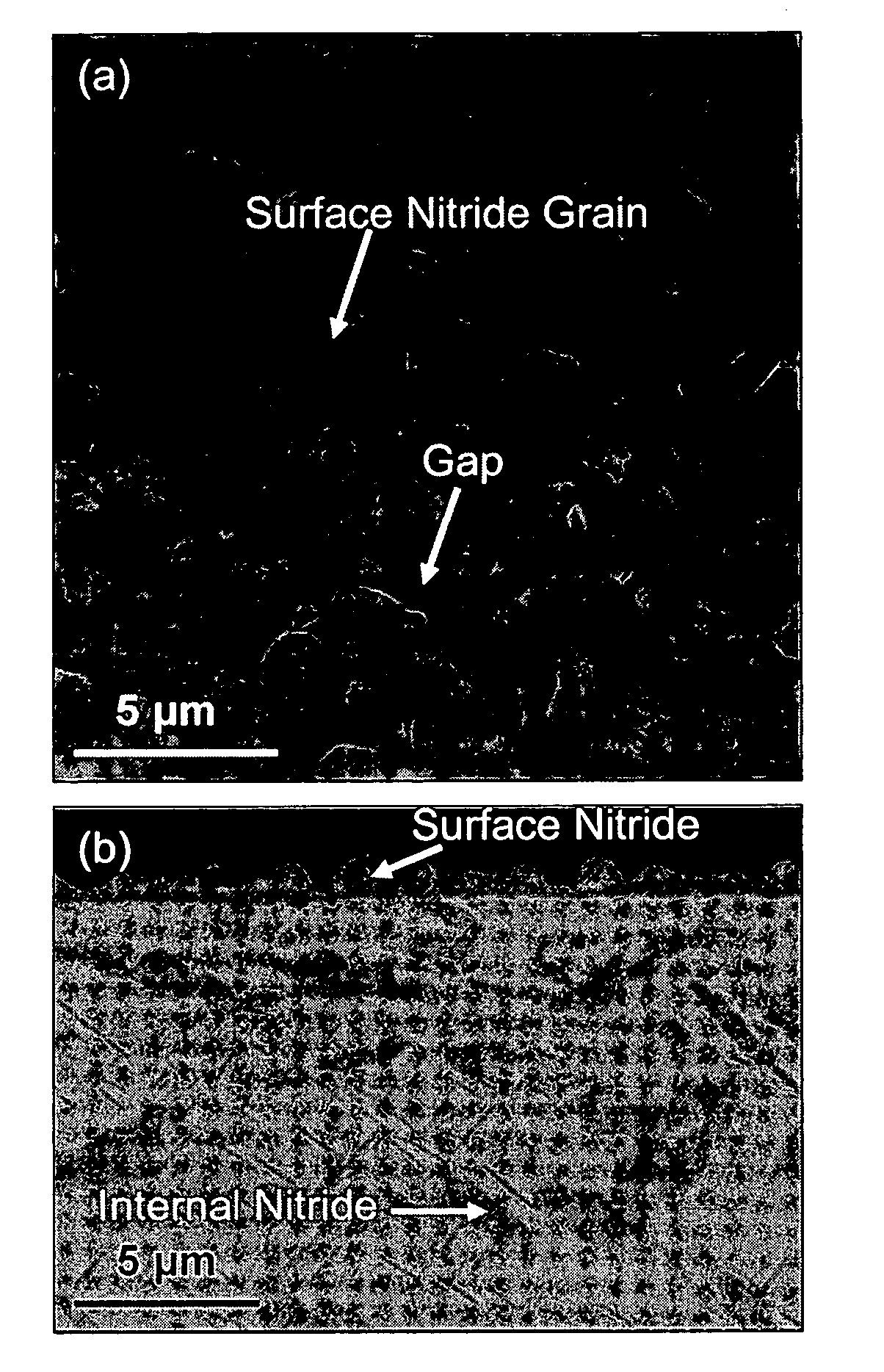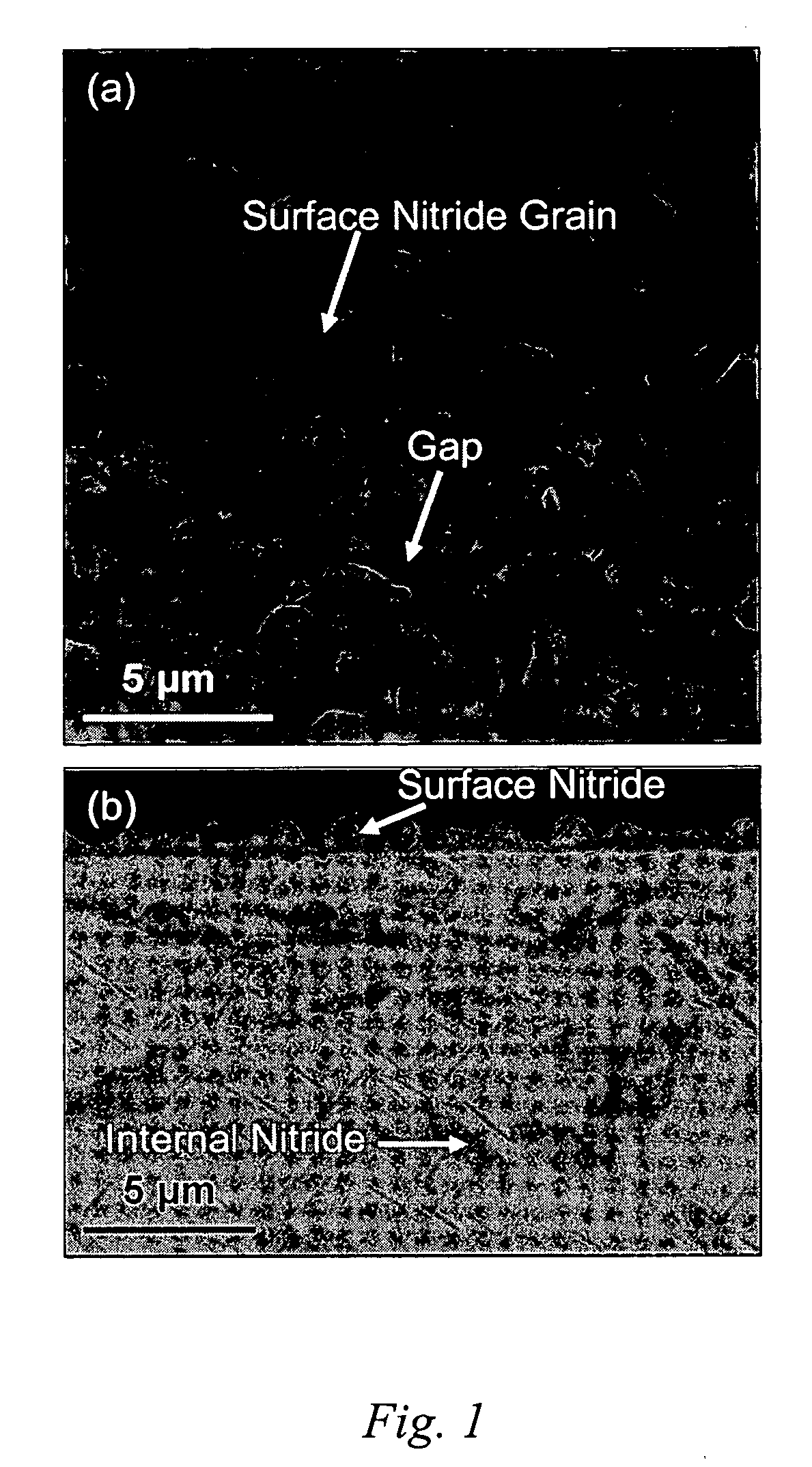Iron-based alloy and nitridation treatment for PEM fuel cell bipolar plates
a fuel cell and bipolar plate technology, applied in the field of surface nitrided alloys, can solve the problems of low power density of the fuel cell stack, inability to meet the requirements of inability to manufacture graphite for most wide-scale commercial us
- Summary
- Abstract
- Description
- Claims
- Application Information
AI Technical Summary
Benefits of technology
Problems solved by technology
Method used
Image
Examples
Embodiment Construction
[0023] A solution to forming a defect-free protective surface on an iron-based alloy bipolar plates has been discovered that involves the growth of a protective nitride layer comprising chromium nitride essentially free of iron on the bipolar plate alloy by high-temperature nitridation. The transition metal nitrides offer an attractive combination of high electrical conductivity and good corrosion resistance. A bipolar plate is prepared by providing an appropriate iron-based alloy which has been stamped, machined, or otherwise shaped to possess the desired geometric features of the plate, and forming a nitride surface on the alloy. The nitride surface is formed under conditions such that one or more elements of the alloy chosen to be preferentially nitrided diffuses outward from the alloy and are fixed at the surface as a nitride by reaction with an oxidizing gas and subsequently a nitriding gas to form a continuous surface layer. Pinhole defects do not form at elevated temperatures...
PUM
| Property | Measurement | Unit |
|---|---|---|
| temperature | aaaaa | aaaaa |
| temperature | aaaaa | aaaaa |
| temperature | aaaaa | aaaaa |
Abstract
Description
Claims
Application Information
 Login to View More
Login to View More - R&D
- Intellectual Property
- Life Sciences
- Materials
- Tech Scout
- Unparalleled Data Quality
- Higher Quality Content
- 60% Fewer Hallucinations
Browse by: Latest US Patents, China's latest patents, Technical Efficacy Thesaurus, Application Domain, Technology Topic, Popular Technical Reports.
© 2025 PatSnap. All rights reserved.Legal|Privacy policy|Modern Slavery Act Transparency Statement|Sitemap|About US| Contact US: help@patsnap.com



